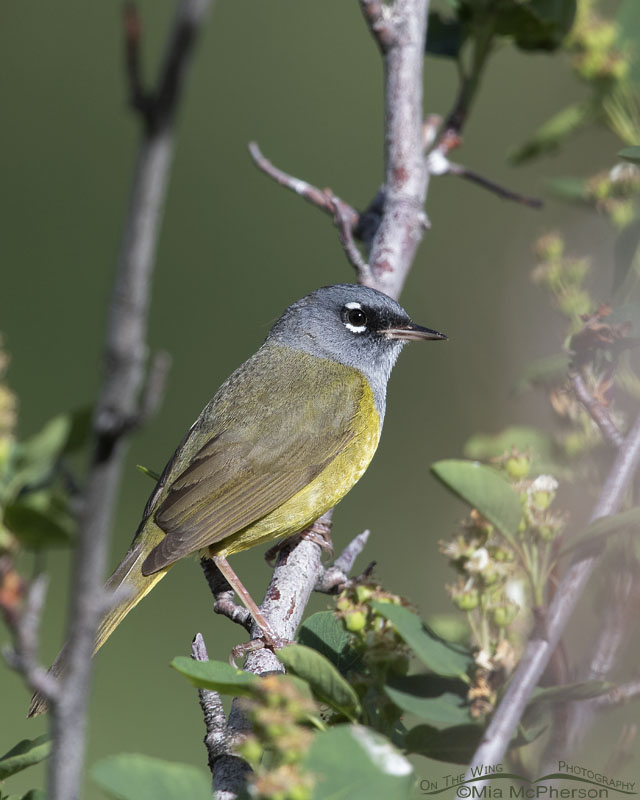 Adult male MacGillivray’s Warbler in a serviceberry bush – Nikon D500, f6.3, 1/1000, ISO 500, Nikkor 500mm VR with 1.4x TC, natural light
Adult male MacGillivray’s Warbler in a serviceberry bush – Nikon D500, f6.3, 1/1000, ISO 500, Nikkor 500mm VR with 1.4x TC, natural light
The very first warbler I ever photographed in Utah was a male MacGillivray’s Warbler near Silver Lake in the Wasatch Mountains in July of 2008 and that was before I moved here in 2009. Since that time I have continued to struggle to get the photos of this species that I hope for and dream about. These medium sized warblers are shy, skulky and they blend into their habitat easily. More on that later though.
The last three times I have gone up into the Wasatch Mountains I’ve found, observed, and photographed some nesting MacGillivray’s Warblers. It hasn’t been easy to take photos of them, not at all. Finding the birds and pointing them out wasn’t easy either.
On June 2nd I had my first opportunity to photograph the male when he flew into a serviceberry shrub. He was partially hidden from view and when he moved higher up the shrub where he might have come out into the open for a clear shot a Song Sparrow came in and chased him off.
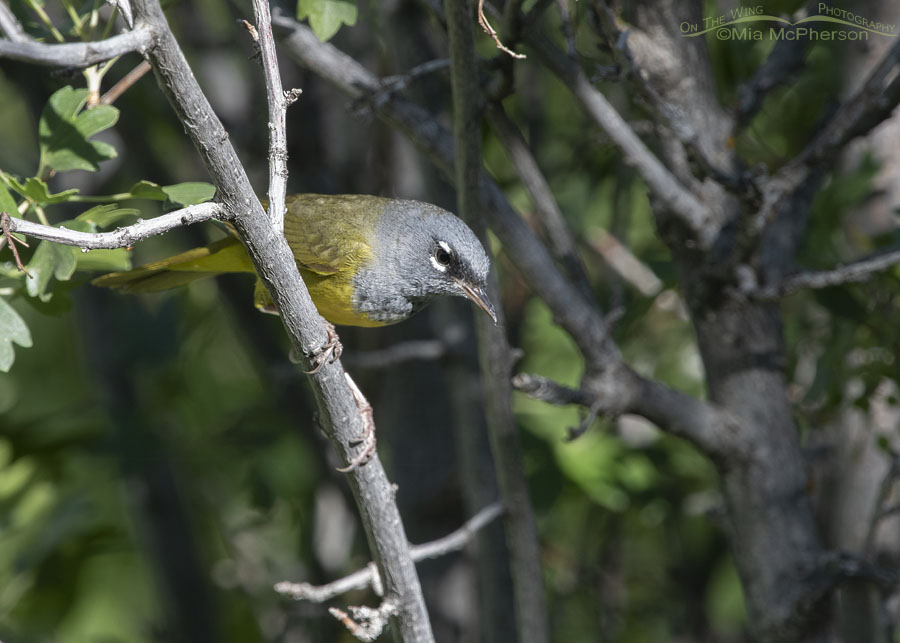 Male MacGillivray’s Warbler perched in a Golden Currant – Nikon D500, f8, 1/320, ISO 500, Nikkor 500mm VR with 1.4x TC, natural light
Male MacGillivray’s Warbler perched in a Golden Currant – Nikon D500, f8, 1/320, ISO 500, Nikkor 500mm VR with 1.4x TC, natural light
On the 4th of June I had more opportunities to photograph MacGillivray’s Warblers, a nesting pair and from what I saw there were two others in the area. I took some long distance images of the male and female MacGillivray’s going in and out of their presumed nesting location. Once in a while the male MacGillivray’s would start to move up in a bush or shrub and I’d get my hopes up that it would come out into the open and sing and that I’d be able to take some of those photos I’ve been hoping for.
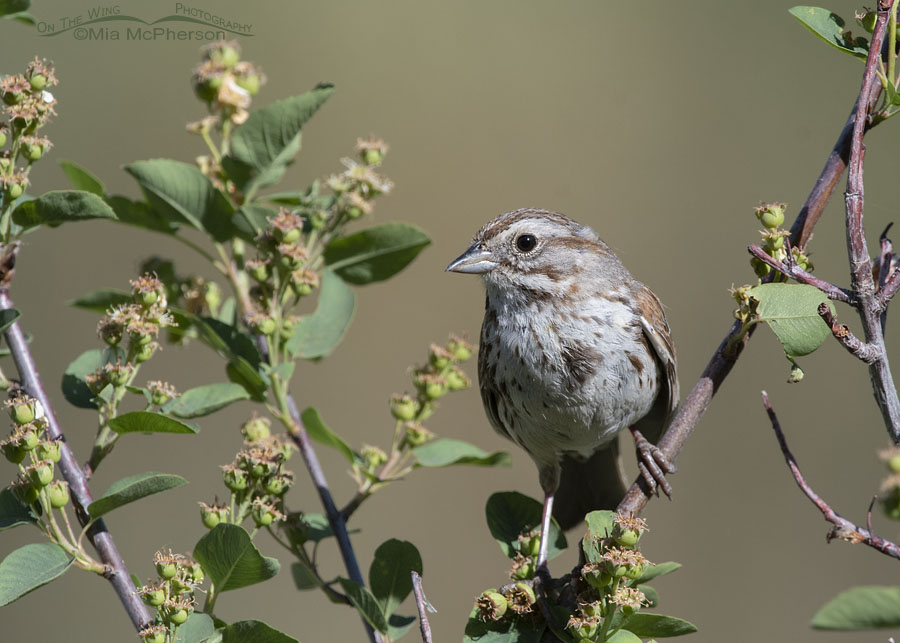 Defensive nesting Song Sparrow – Nikon D500, f8, 1/800, ISO 500, Nikkor 500mm VR with 1.4x TC, natural light
Defensive nesting Song Sparrow – Nikon D500, f8, 1/800, ISO 500, Nikkor 500mm VR with 1.4x TC, natural light
But a defensive Song Sparrow would consistently chase the male MacGillivray’s away before he could pop up on top of the bushes or shrubs. Almost every time.
This is a photo I took right after the Song Sparrow chased the male MacGillivray’s Warbler from this nice fairly open perch.
Because the Song Sparrow kept acting defensive I watched it and its possible mate while waiting for the MacGillivray’s Warblers to show back up and thanks to the defensive interactions between the warblers and the sparrows I know exactly where those Song Sparrows are nesting too. So I can head into the mountains now and get photos of both species near their nests.
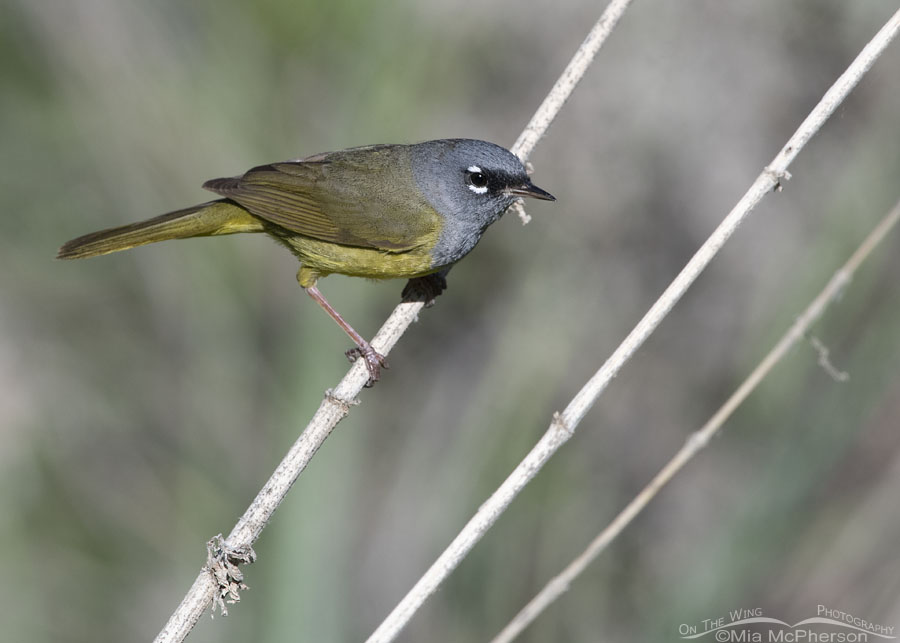 Male MacGillivray’s Warbler perched out in the open – Nikon D500, f8, 1/1600, ISO 500, Nikkor 500mm VR with 1.4x TC, natural light
Male MacGillivray’s Warbler perched out in the open – Nikon D500, f8, 1/1600, ISO 500, Nikkor 500mm VR with 1.4x TC, natural light
The Song Sparrow must have been busy once though on the 4th because when the male warbler popped up into the open I was able to take a nice series of images of him without the sparrow chasing it away.
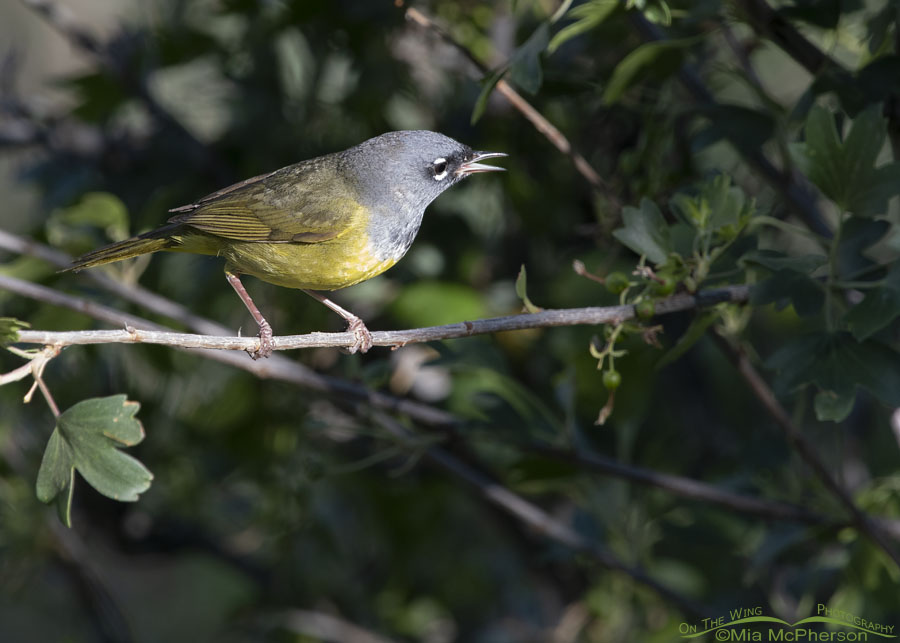 Defensive male MacGillivray’s Warbler – Nikon D500, f8, 1/250, ISO 500, Nikkor 500mm VR with 1.4x TC, natural light
Defensive male MacGillivray’s Warbler – Nikon D500, f8, 1/250, ISO 500, Nikkor 500mm VR with 1.4x TC, natural light
Two days ago I tried to get photos of the nesting MacGillivray’s Warblers out in the open again. This image shows the male out in the open but he never turned his head more towards me than this photo shows. He was focused on a Song Sparrow that was deeper in the shrub. He looks a little ferocious with his bill open like that.
The Song Sparrow or sparrows were still actively chasing the warblers all over the place two days ago. I can’t blame the sparrows because after all they are feeling the need to nest and raise young as strongly as the warblers are.
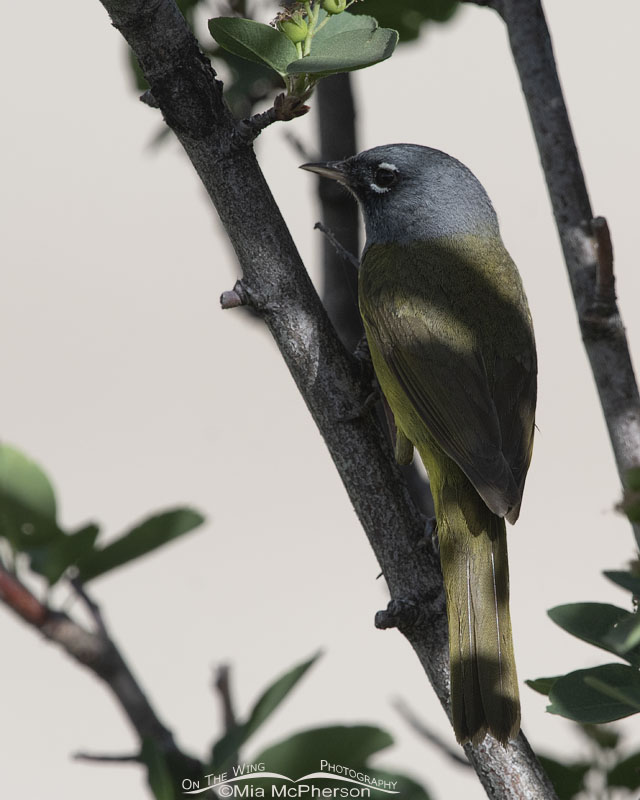 Why MacGillivray’s Warblers can be hard to see – Nikon D500, f8, 1/1250, ISO 500, Nikkor 500mm VR with 1.4x TC, natural light
Why MacGillivray’s Warblers can be hard to see – Nikon D500, f8, 1/1250, ISO 500, Nikkor 500mm VR with 1.4x TC, natural light
The last photo I wanted to share today is an example of how easily the MacGillivray’s Warblers can blend into their habitat. In this fairly clear and close view of the male the shadows from the leaves of the shrub combined with the bird’s feather colors and plumage patterns work as an excellent camouflage. If a person isn’t paying attention they might not even see these warblers when they are perched in trees, shrubs or bushes.
Despite the difficulties I have finding and photographing MacGillivray’s Warblers I will keep trying to take better images of them. Photos of them are worth the struggle.
Only one or two of these MacGillivray’s Warbler photos will make it into my photo galleries. But I wanted to share all of these plus one of the Song Sparrows who kept chasing my target birds away.
Life is good. Stay safe.
Mia
Click here to see more of my MacGillivray’s Warbler photos plus facts and information about this species.


Thank you. I am glad (and unsurprised) that you perservered and love these shots.
Wonderful photos and finds!
Such a good looking bird! The Song Sparrow as well! The first and the last shots are my favorites of the series. He’s so clear in the first one that I feel as if I could reach out and touch him. I like the shadow play over the bird in the last shot; the lighter green on his ventral surface looks almost fluorescent.
Nice! A gorgeous bird and inspiring photography!
What a pretty little bird. Yes, I can see that they do blend into the foliage.
Stately